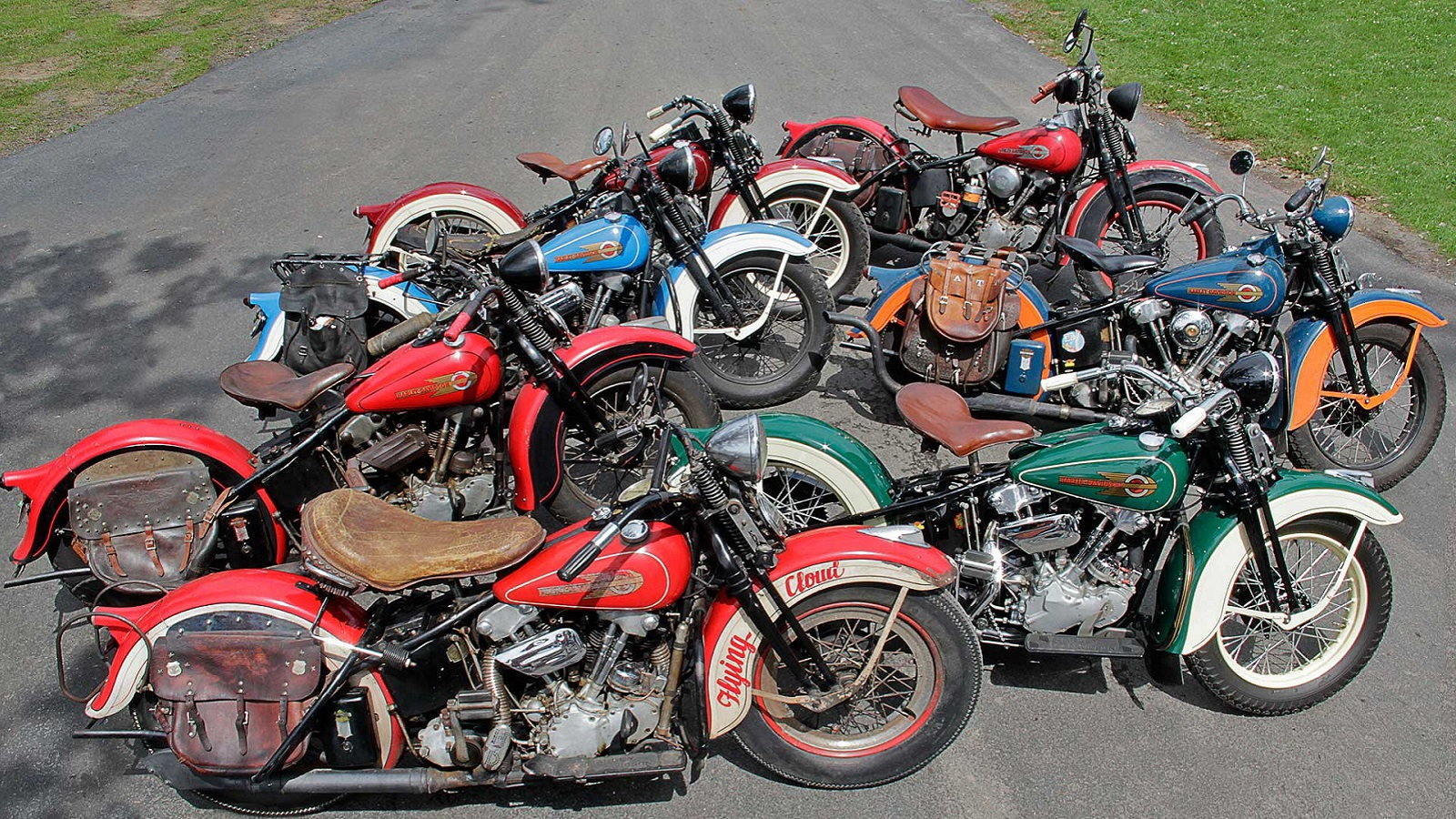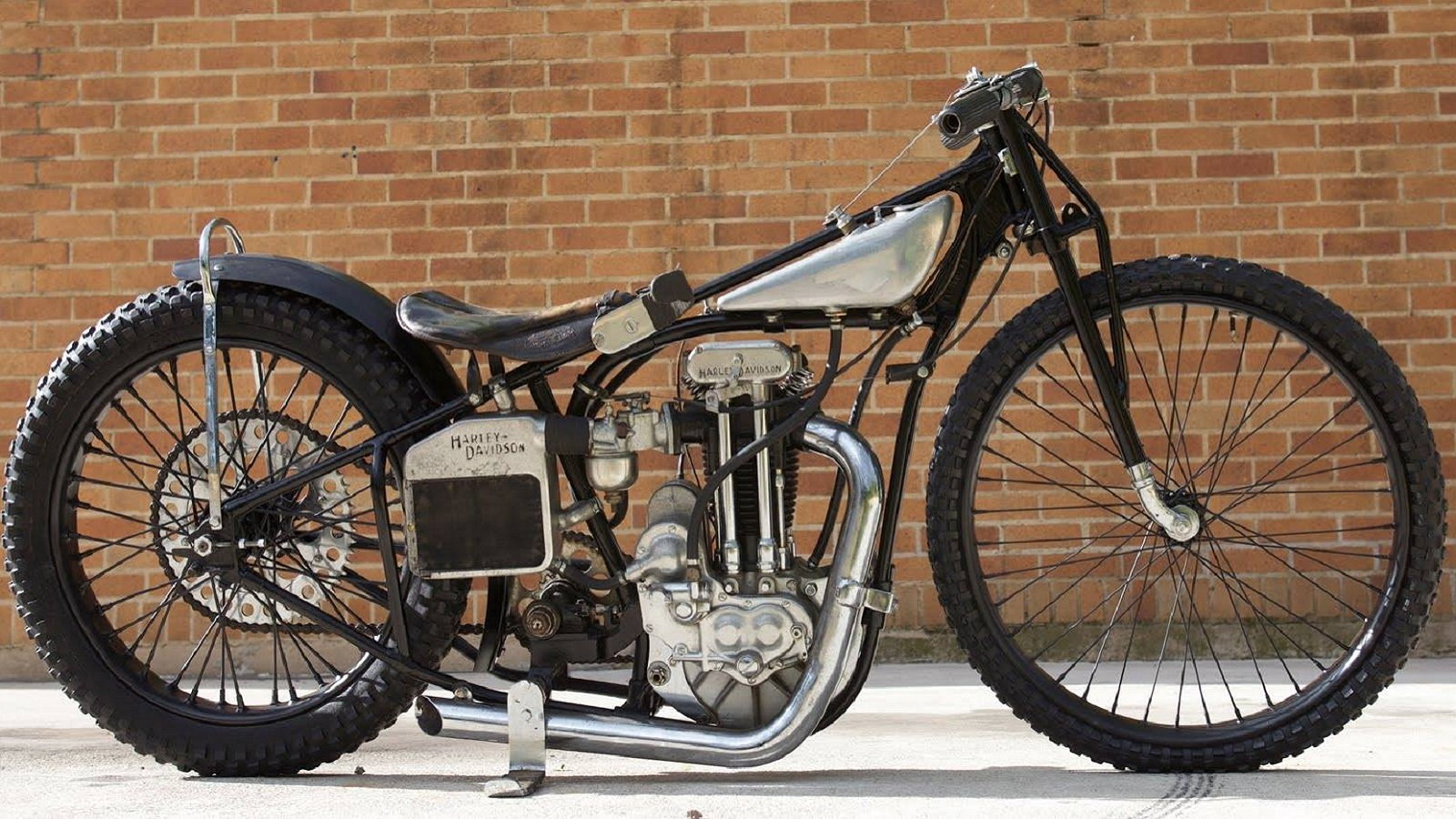10 Most Desirable Harley-Davidsons






















If it is desirable, it is probably a collectible, which means it ain't cheap...
Things that are considered to be highly desirable are often very popular, incredibly attractive, rare and highly sought-after, have a racing pedigree, or all of the above. Over the years, Harley-Davidson has created their share of fantastic motorcycles that have varying characteristics to suit the rider and the type of riding they do. If one were to take 10 different Harley enthusiasts and ask them to create a list of the most desirable Harley's, chances are each of their lists would be different.
For the sake of argument, the following Harley-Davidson models listed are considered to be the most desirable and collectable bikes of the marque in that they have fetched extremely large sums in recent sales. Prices skyrocket on bikes that are extremely desirable, and those who are fortunate enough to have deep pockets will spend boat loads of cash to bring home a gem. Behold some of the most expensive, desirable and collectable Harley-Davidson motorcycles.
>>Join the conversation about the most desirable Harley's right here in HD Forum!
1. 1907 "Strap-Tank" Single
The 1907 "Strap-Tank" Single was Harley's first offering after graduating from their small shed to a full-fledged factory. Considered by collectors to be the most desirable of all Harley-Davidson motorcycles, the Strap-Tank is named after its nickel-plated steel straps that tied the oil and fuel tanks to the main frame. The engine was a 440cc single cylinder collaboration from Harley and engine builder, Ole Evinrude.
With supposedly 150 units built, these were the first true production bikes to roll off of the assembly line and sold to the public. The example shown was only the 37th bike in the production run and 94th motorcycle ever built by H-D. As with all collectors items, originality increases value, and this 108 year-old example is just as it rolled off of the assembly line. The auction gavel fell at an astounding $715,000, making this the most expensive original Harley-Davidson ever sold.
>>Join the conversation about the most desirable Harley's right here in HD Forum!
2. 1911 7D Twin
Harley-Davidson has long been synonymous with their thundering V-Twin engines which all originate from the 1911 7D Twin. Although Harley V-Twin engines had appeared in race trim as early as 1908, the first road-going twins were sold in the 1911 7D models. The biggest innovation at the time was that the intake valves were now mechanically driven instead of operating solely on the engine vacuum and compression of the pistons to open and close the valves.
The 7D also featured the same belt tensioning system as found on the single cylinder models to allow the engine to remain running while stopped. Overall, it was one of the more ride-able motorcycles of the time. In 1911, only four 7D models were built and sold for $300. One of the original four, serial #1910A, sold for $283,000 in January, 2014.
>>Join the conversation about the most desirable Harley's right here in HD Forum!
3. 1912 X8E Twin
Following the release of the 1911 7D twin, Harley offered a variety of their newer Model 8 bikes in 1912. Total production of the Model 8 machines topped out 3,852 units, but a very small portion of those produced were fitted with 50 cubic-inch twin cylinder engines. Even more rare were the X8E machines fitted with the larger 61 cubic-inch V-Twin engines that were only produced towards the end of the model production year.
The X8E was the first fully chain driven motorcycle sold by H-D and was fitted with a clutch assembly in the rear axle hub to allow for free-wheeling. While no detailed production numbers are available, many estimate there were only a handful of Harley's top-of-the-line X8E produced. The above example was auctioned off for $117,300 in January of 2015.
>>Join the conversation about the most desirable Harley's right here in HD Forum!
4. Cal Rayborn II XRTT Road Racer
The XRTT road racer project, based on the highly competitive XR-750 flat track platform, was the successor of the side-valve KRTT. The idea was to take on the Japanese factories and their high-strung 2-stroke grand prix machines in the Trans-Atlantic Race Series. Similar to the flat track bike, the XRTT used Ciriani forks and Girling shocks on the chassis side of things, but swapped in an effective four shoe drum brake setup on the front and a single disc rear brake.
While the engine featured twin 36-mm Mikuni carbs and dual reverse cone exhausts, it is estimated to have only made 80 horsepower and was often 40 mph slower on the straights than the competition. That said, Cal Rayborn II achieved an amazing feat by piloting the XRTT to three race victories in the 1972 Trans-Atlantic races and tied for the championship. While XRTT's have traded hands in the $50-70k range, Rayborn's factory race bike sold for $187,500 in a 2009 auction. In general, the XRTT and KRTT bikes are quite desirable as they stand out as unique period pieces in Harley's racing history.
>>Join the conversation about the most desirable Harley's right here in HD Forum!
5. 1928-1933 Factory DAH Hillclimber
While track racing was as popular as ever in the 1920's, a newcomer to the world of motorcycles was the hillclimb event. Considering that just about every state has a good hill or two, motorcycle hillclimbing quickly gained popularity across the country in the mid '20s and was dominated early on by the middleweight Indian and Excelsior motorcycles.
With a 45 cubic-inch capacity limit, the Harley racing department abandoned the idea of mixing and matching engine components to meet class regulations and built a whole new specialized racer, the DAH. The DAH won events in its first year of competition (1929) and earned several national hillclimb titles by 1932. Unfortunately, the stock market crash of 1929 nearly halted all motorcycle sales, so Harley-Davidson only built 25 machines that were subsequently given away at $300 a piece to generate revenue for the company. The DAH is one of the rarest Harley's built, with the most recent sale of a 1930 model bringing in $181,500.
>>Join the conversation about the most desirable Harley's right here in HD Forum!
6. 1936 EL Knucklehead
The 1936 EL "Knucklehead" was an entirely new machine built from the ground up and, in many ways, was a departure from Harley's of the past. The new duplex-tubed frame was said to improve handling while providing excellent stability. The iconic overhead valve big-twin engine with a recirculating oiling system was finally available outside of racing. A new four-speed transmission was a cut above the outgoing three-speed that had served Harley for a solid 20 years. Couple these improvements with swooping fenders and a sleek tear-drop tank, and you had a bike that was, and still is, hugely embraced by motorcycle enthusiasts.
Considering the EL was such a new, radical approach, Harley supposedly downplayed the introduction of the 1936 Knucklehead to gauge the public's response before pushing ahead with the 1937 models. Many agree that any year of the Knucklehead is a desirable machine, but per usual, the first year model of anything is often the gem collectors seek. To date, the first year 1936 EL is the most expensive Knucklehead to be sold at $165,000.
>>Join the conversation about the most desirable Harley's right here in HD Forum!
7. 1934 CAC Racer
By the mid 1930s, cinder track racing had gained popularity and many racers were modifying and rebuilding their Harley's to be competitive. Prior to 1934, H-D didn't offer a production racer that was ready to go straight out of the box, but amidst numerous requests, Harley eventually designed and released their CAC cinder track racer.
History says that Harley-Davidson only produced 20 CAC bikes and five spare engines in 1934. As with most racing machines of the era, many were beat to a pulp on track and often tossed in the bin once their usable life was over. For this reason, the CAC Racers have become highly collectable as there are only a handful left in existence. The last one seen to cross the Mecum Auction block sold for a hefty $176,550.
>>Join the conversation about the most desirable Harley's right here in HD Forum!
8. 1915 11F Twin
The 1915 11F Harley-Davidson was a big step forward for the company in terms of mechanical improvements and machines sold. The three-speed transmission was introduced on the 11F and proved to be both functional and reliable enough for the design to be used on the next 20 years of Harley motorcycles.
The big news was that power of the 11F was up a staggering 37% compared to the 1914 twin-cylinder bikes by way of larger intake valves with valve seats cut at a 45 degree angles, a larger intake manifold, reinforced crankshaft pin and bearings, and an improved exhaust system. The crankshaft was also now automatically lubricated instead of requiring the rider to visually monitor oil flow. While 11F bikes bring a pretty penny in any condition, an excellent restoration brought $98,280 at a 2014 Las Vegas Mecum Auction.
>>Join the conversation about the most desirable Harley's right here in HD Forum!
9. 1929 21 Cubic-inch Peashooter Racer
By the mid to late 1920s, the budding American Motorcyclist Association (AMA) was organizing board-track and dirt oval racing for a variety of bike classes. The smallest racing class featured the 21 cubic-inch (350cc) "Peashooter" motorcycles that were loosely based on the same size production bikes. The idea behind the peashooter class was to limit speeds and lower the natural risks of racing by capping the engine size at 350cc, but what emerged were stripped-down, light-weight bikes that could run almost as fast as the big bikes.
As can be seen in the photo, these trick little machines had neither brakes, clutch, nor transmissions as these components were deemed excessive weight that did not aid in speed. The bikes weighed in at a touch over 200 pounds and are said to have reached speeds of 100 mph. In 2011, at a Bonhams auction, a factory Peashooter Racer originally sold in the lucrative Australian racing market changed hands for $125,000.
>>Join the conversation about the most desirable Harley's right here in HD Forum!
10. 1928 JDH
The JDH Harley was the superbike of the 1920s. Although Harley had used their twin-cam engine in racing applications, the JDH was the first motorcycle that made racing technology available to the general public. Magnesium alloy pistons combined with lifters acting directly on the cam lobes allowed this bike to rev to the moon and reach speeds of 100 mph in stock trim.
While most thought Harley held off from releasing their twin-cam hot-rod in earlier year models because of potential longevity and reliability issues when used in street applications, Harley actually claimed that the introduction of the new front brake allowed the speed machine to be tamed and safely brought to a stop when necessary. It is a rare occurrence anytime a manufacturer offers technology often reserved for their racing department to the public. Most feel the desire to own a JDH is driven by the fact that one can experience the pinnacle of Harley performance of an era past. JDH prices are always on the rise, with the most expensive example crossing the auction block at $108,000.
>>Join the conversation about the most desirable Harley's right here in HD Forum!
For maintenance and repair guides, browse our technical How-to articles at http://hdforums.com/how-tos!

